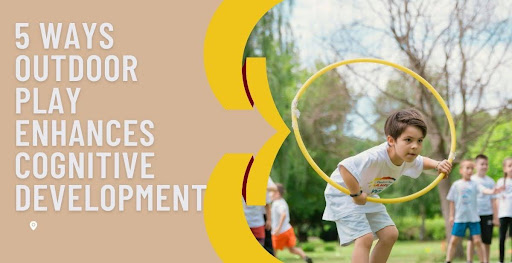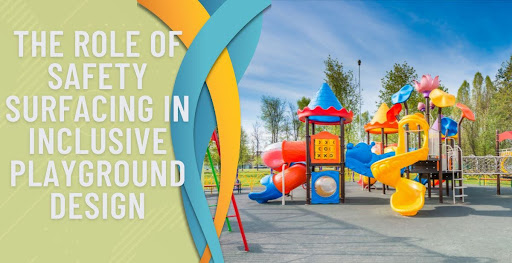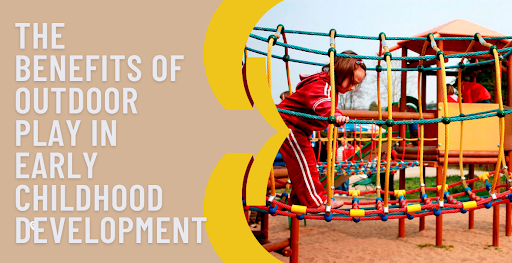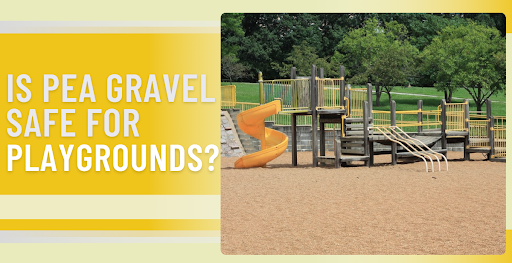Design an Outdoor Playground With Limited Space
Maximize small spaces with smart playground design tips. Create a safe, fun area where kids can play, explore, and enjoy every inch.


Playgrounds are fun spots where kids can play, dream up adventures, and burn off extra energy. Creating a play area aims to create a fun spot that offers different kinds of play.
Sometimes, you might only have a small space for your playground, like a tiny park or a corner of a schoolyard. This can be tricky, but you can make it work with clever planning and creative ideas.
Next, we'll talk about some innovative ways to design a playground in a small area so you can get the most out of the space, keeping it both fun and valuable.
The Importance of Playing Outdoors

Playing outside is good for you because you get fresh air and sunlight. This is just as true for kids. Playing outdoors helps kids grow strong in many ways:
Physical health
Kids do activities that help them become strong, coordinated, and fit. They run around and explore, which helps build their muscles and bones.
Cognitive abilities
Kids learn to solve problems, make decisions, and think creatively. Playing on different surfaces and with natural things helps them feel better and get curious.
Social skills
Playing outside helps kids learn to get along and talk with others their age. They learn to share, work together, and fix disagreements.
Emotional well-being
Outdoor play lets kids enjoy playing freely and happily, helping them relax and have fun without strict rules. It also keeps them healthy and less stressed.
Even if you only have a small space for a playground, don't worry about it being too small. Whether it's a tiny area behind your church or a small empty spot next to your apartment, you can turn that space into a great place for kids to play. You'll be surprised how much fun they can have in a small, well-set-up play area.
How to Create an Outdoor Playground in a Limited Space

1. Assess Your Space
Before planning your small playground, thoroughly assess the available space. Start by taking accurate measurements of the area to fully understand its dimensions.
As you do this, identify potential obstacles, such as trees, utility poles, drainage systems, or nearby buildings, that could impact the layout or safety of the playground design. Understanding these physical limitations will be the foundation for a well-thought-out and effective design plan.
2. Define Your Goals
Clearly defining your goals is crucial when designing a small playground, as it guides every decision you make. Begin by considering who the primary users of the playground will be—are you catering to toddlers, school-aged children, or a mixed-age group?
Determine whether the playground's primary focus will be physical exercise, educational play, social interaction, or a combination of these elements. With a clear vision of your objectives, you can make informed and strategic choices that ensure the playground meets its intended purpose and effectively serves the community's needs.
3. Optimize Layout and Zoning
Using space wisely is key in a small playground. Think about splitting the area into different zones for different activities. Possible zones might include:
- Active Play Zone: Space for moving around, like swings, slides, and climbing walls.
- Quiet Play Zone: Areas for calm activities like reading, drawing, or playing with different textures.
- Social Play Zone: Places for group games or chatting, like benches or picnic tables.
4. Choose Appropriate Playground Equipment
When selecting age-appropriate playground equipment, it's important to pick items that suit the kids who will be using the playground. In smaller areas, opt for flexible play structures that don’t occupy much space but still offer various activities for children.
Consider using a supplier like Park N Play or even your local hardware store, which can provide easily adjustable products. This way, you won’t need extensive customization to make the equipment fit the space.
Items like modular play systems and interactive play panels offer numerous ways to play without requiring much space. Just remember that moving equipment like swings and slides need extra safety surfaces and space to ensure safety.
5. Focus on Safety
Safety should always be the top priority, no matter the size or location of the playground. Ensuring the play area has soft surfacing like rubber mulch or safety tiles is crucial in minimizing injuries from falls and providing a safer environment for children.
It's also essential to allow sufficient space around each piece of play equipment, creating clear safety zones that reduce the risk of accidents. Regularly having a trained playground inspector review your design and setup will ensure it meets all current safety standards, giving caregivers and children peace of mind.
Additionally, it's important to routinely inspect the playground equipment for any signs of wear or damage and promptly address any issues to maintain a safe and enjoyable space.
6. Be Creative with Design
Designing a small playground offers a unique opportunity to let your creativity shine and make the most of the available outdoor play space. Consider the playground layout and how to use the surrounding area and natural materials to create a visually appealing and functional environment.
Incorporating natural elements like rocks, logs, or plants can add a touch of nature to the playground, making it more inviting and aesthetically pleasing. Unique design touches, such as custom-made benches or playful signage, can further enhance the outdoor space, giving the playground a distinctive character that reflects the community's personality.
7. Maximize Vertical Space
When horizontal space is limited, thinking can significantly increase the playground's potential. Incorporating tall play structures, like climbing towers or slides with multiple levels, offers more activities without occupying additional ground space.
Vertical elements such as existing structures or trees, climbing nets, and overhead play bars can provide a variety of a children play experiences, encouraging them to explore and engage with their environment in new ways. Adding features for messy play can further enhance the vertical space, providing sensory-rich fun and educational activities.
By creatively using the space above, you can pack more fun and adventure into a small footprint, ensuring that every inch of the playground is utilized effectively.
8. Include Sensory Elements
Incorporating sensory elements into your playground design supports children's overall development and makes playtime more engaging. Sensory play encourages children to explore their environment using all their senses, which can be achieved by adding a variety of textures, sounds, and scents.
Features like textured surfaces, musical instruments, or fragrant gardens can stimulate children's senses and make the playground more interactive and educational. These sensory-rich experiences enhance the enjoyment of imaginative play and contribute to cognitive and emotional development, helping children learn and grow while having fun.
9. Provide Seating and Shade
Creating comfortable seating areas is essential for caregivers and parents who want to relax while keeping an eye on their children at play. By incorporating GameTime Shade pergolas or umbrellas, you can offer much-needed shade, making the playground more enjoyable and inviting, especially during the hot summer.
These shaded areas provide a respite from the sun and encourage extended visits, creating a more pleasant environment for everyone. Thoughtful placement of seating and shade throughout the playground will ensure that adults can supervise their children comfortably while also enhancing the overall appeal and usability of the space.
10. Foster Inclusivity
Designing your small playground with inclusivity in mind ensures that it is a welcoming space for children of all abilities. Incorporate wheelchair-friendly paths, adaptive play equipment, and sensory-rich elements to cater to every child's diverse needs.
This approach allows children with different abilities to participate fully and promotes social interaction and play among all kids. By fostering an inclusive environment, you create a space where every child feels valued and can enjoy the playground, helping to build a more connected and supportive community.
11. Involve the Community
Engaging the local community in the playground design process is key to creating a space that truly reflects the needs and desires of its users. Reach out to parents, teachers, and children to gather their ideas and feedback, ensuring that the playground meets the expectations of everyone involved.
By involving the community from the start, you build a sense of ownership and pride in the playground, making it a cherished outdoor play space that people feel connected to. This collaborative approach results in a better-designed playground and strengthens community ties, as everyone works together to create shared outdoor spaces for play and enjoyment.
12. Maintain Flexibility
Maintaining flexibility in your playground design is essential for adapting to changing needs and usage patterns. Small playgrounds may need to evolve as the community grows or as the way children use the space changes, so it's essential to remain open to making adjustments.
If space allows, consider incorporating plans for future expansion or modular elements that can be easily modified or added. By planning with flexibility, you ensure that the playground can continue to meet the community's needs, remaining functional and enjoyable for years to come.
Maximize Playtime in Limited Spaces With Park N Play
Designing an outdoor playground in a limited space may seem challenging. Still, with thoughtful planning and creativity, creating a vibrant and engaging play area that maximizes every inch is possible. By carefully assessing your space, setting clear goals, and choosing versatile equipment, you can design a playground that offers a variety of play experiences while maintaining safety and inclusivity.
Remember, even in a small area, incorporating elements like vertical play structures, sensory features, and shaded seating can greatly enhance the playground's appeal. Staying flexible and open to future adjustments will ensure that the playground meets the community's needs as it evolves, providing a joyful and inclusive space for all children to enjoy.
Contact Park N Play today to start designing a playground that perfectly fits your space and meets your needs. Let's work together to create a space where children can play, explore, and thrive!
FAQs
How much space do you need for a playground?
The space needed for a playground varies depending on the number and type of equipment, but generally, you should plan for at least 1500-2500 square feet for a small playground. This allows enough room for play structures, safety zones, and seating areas while ensuring children have ample space to move freely.
What are nine things to consider when planning an outdoor playground?
When planning an outdoor playground, consider safety, age-appropriate equipment, space requirements, accessibility, shade, seating, maintenance, durability, and potential for future expansion. Each of these factors plays a critical role in creating a safe, fun, and long-lasting play area that meets the needs of all children.
What is the minimum distance allowed between the playground structures?
The minimum distance allowed between playground structures is typically 6 feet, though this can vary depending on the type of equipment and local safety guidelines. Ensuring adequate spacing between structures is essential to prevent overcrowding and minimize the risk of accidents.


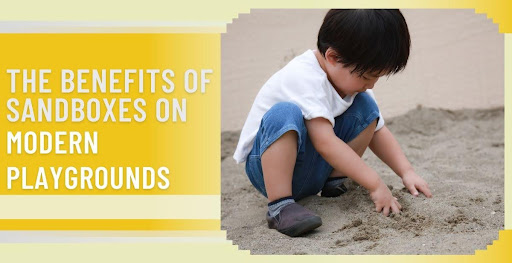
.jpeg)
.jpg)
.jpg)
.jpeg)
